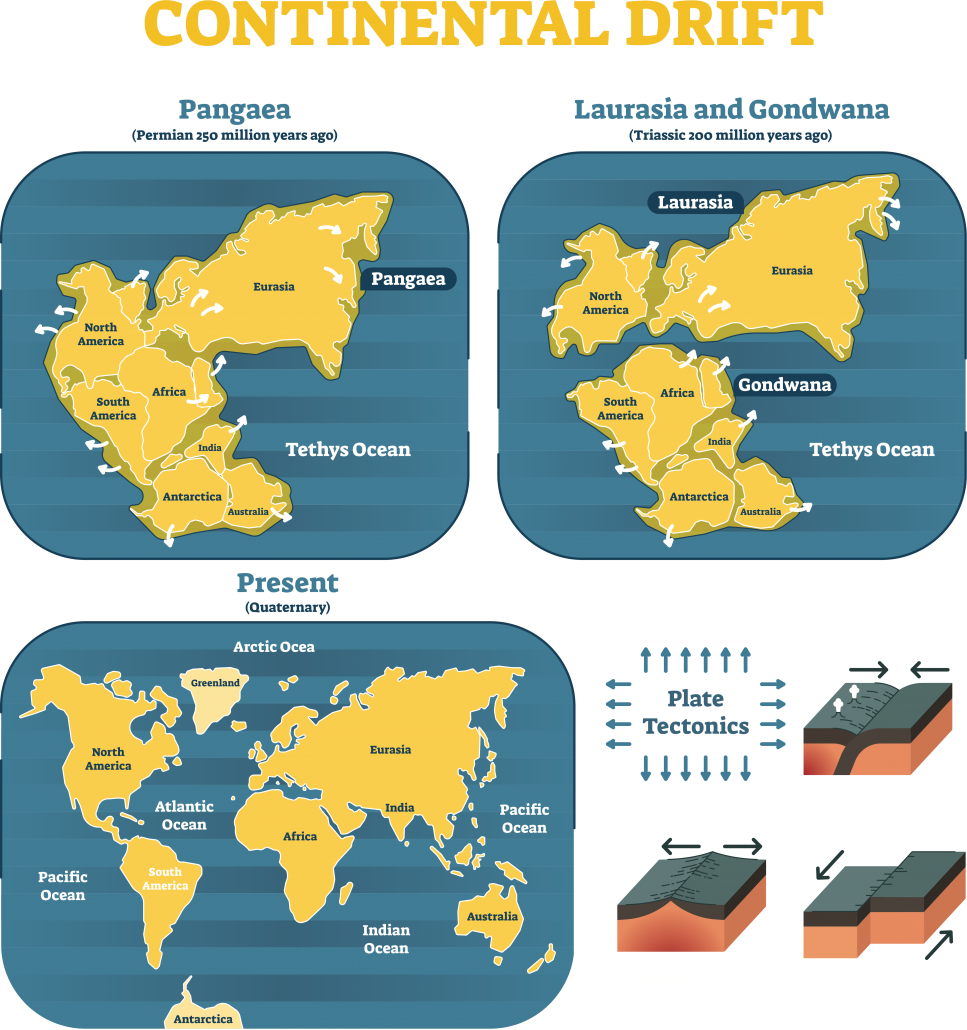What is Continental Drift?
In 1912, Alfred Wegener published a theory to explain why the Earth looked like a huge jigsaw. He believed the continents were once joined, forming a supercontinent he called Pangaea. Over 180 million years ago, this supercontinent began to “break up” due to continental drift.

Continental drift
During the 20th Century, scientists developed the theory of Plate Tectonics. The theory suggests that the crust of the Earth is split up into seven large plates (see map below) and a few smaller ones, all of which can slowly move around on the Earth’s surface. They lie on the ductile mantle that allows them to move. There are several explanations for the movement of the Earth’s plates, and these are explored in the Why do plates move? page.
Wegener’s evidence for continental drift was that:
Use the images below to explore related GeoTopics.